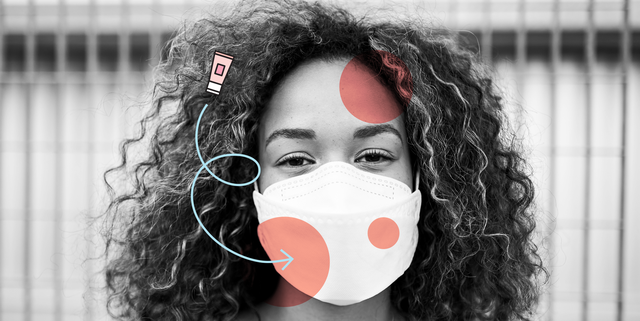Masking, Sun Exposure, Heat, Nervous Tension = Rosacea
"One of the problems that we're trying to correct is that rosacea has been vastly under-diagnosed with people who have darker skin colour.""When LL37 is present in the appropriate amounts, it's very important for protection against a lot of different types of infection. [When the immune system releases too much LL37 that can trigger autoimmune-type diseases such as rosacea. For people with rosacea], their innate immune system is sort of tuned to hot -- it's over-sensitive, so it's going off when it shouldn't go off."Richard Gallo, dermatologist, microbiologist, Irma Gigli distinguished professor, founding chairman, department of dermatology, University of California, San Diego"Its mechanism of action is not exactly understood, but we know that it's anti-inflammatory in nature and it kills the demodex mites.""This is a chronic disease, which is most likely going to require chronic therapies."Hillary E. Baldwin, dermatologist, Brooklyn, N.Y. clinical associate professor, Rutgers Robert Wood Johnson Medical School

Ocular rosacea can present in people with fairly mild symptoms. It can affect up to fifty percent of people with rosacea, treatable with an oral antibiotic. However, left untreated, ocular rosacea can result in abrasions of the cornea, potentially a decrease in visual acuity in the instance of more serious cases, though rare. Dr.Baldwin emphasizes irrespective of which medical and skin-care treatment attempted for an individual with rosacea it is a marathon in treatment of the condition, not a sprint, reflecting its chronic nature. It cannot be cured, only treated.
An estimated 16 million Americans have rosacea, and over three million Canadians, according to the National Rosacea Society and the Canadian Dermatology Society. The occurrence on the world stage of the global pandemic has not been kind to people with rosacea. Mask-wearing in particular has been inimical to their health, exacerbating the condition. And the combination of summer heat, sun exposure and mask-wearing, has made rosacea sufferers more vulnerable to flare-ups than ever.
One trigger for the onset of symptoms for people with the condition is emotional stress; an additional cyclical with stress the cause of the flare-ups while the flare-ups themselves in turn cause emotional stress. "I recommend my patients try mind-body techniques like progressive muscle relaxation and deep abdominal breathing", recounted Evan Rieder, psychiatrist, dermatologist, professor at New York University Ronald O. Perelman Department of Dermatology.

Ultraviolet rays and high temperatures represent common triggers for rosacea, a chronic inflammatory disorder causing the skin to flush and become hypersensitive. Wearing a mask during this time of a global pandemic while exposure to summer heat and sun can "significantly worsen" the condition, according to the National Rosacea Society. Typically, rosacea has been considered a condition afflicting women over 30 of Northern European descent, with fair skin. That notion is steadily changing.
The condition is classified by observable characteristics; persistence of redness of central facial skin with a propensity to intensify when triggered; the thickening of skin on the nose causing it to appear larger and bulbous (most common in men), are considered to be diagnostic phenotypes. Other distinguishing characteristics used to diagnose rosacea with two or more presenting, are pink bumps, pimples or pustules, flushing, dilated or broken blood vessels at the skin surface commonly known as spider veins, and eye and eyelid irritation which can feel sandy.
First medically described in the 14th century by Guy de Chauliac, a French surgeon, as "red lesions in the face, particularly on the nose and cheeks", the cause of rosacea remains unknown despite the passage of 800 years. According to recent research, rosacea may be connected to the overproduction of cathelicidin LL37, a chemical used by the body to prevent infections. Demodex mites, microscopic organisms living on all human skin, found primarily in hair follicles on the face, present in greater numbers in people with rosacea; another possible source of the infection.
 |
Research also indicates that exposure to sunlight leads to the production of vascular endothelial growth factor, a subtance linked to the development of viable blood vessels. Some of the most common triggers following sun exposure are emotional stress, hot weather, wind, heavy exercise, alcohol consumption, hot baths, cold weather, and spicy foods.
In-office laser and light treatments to reduce redness, flushing and visible blood vessels is performed by many dermatologists. Not everything is known about the condition, despite its long history; what causes its onset, measures that can be taken to avoid contracting rosacea. But it is not a one-treatment-fits-all situation, since people react differently to the condition and experience varying symptoms, so each individual is guided to a therapeutic treatment to address their specific symptoms.

Labels: Heat, Masking, Rosacea, Skin Condition, Sun Exposure, Tension, Treatment

0 Comments:
Post a Comment
<< Home